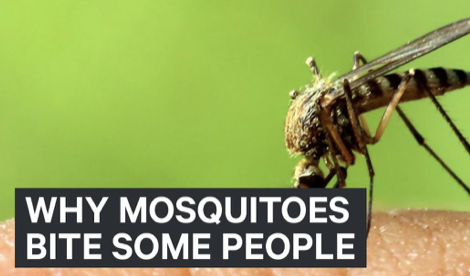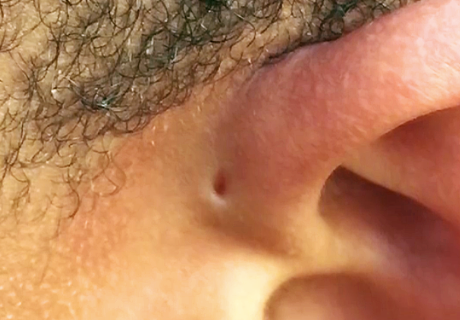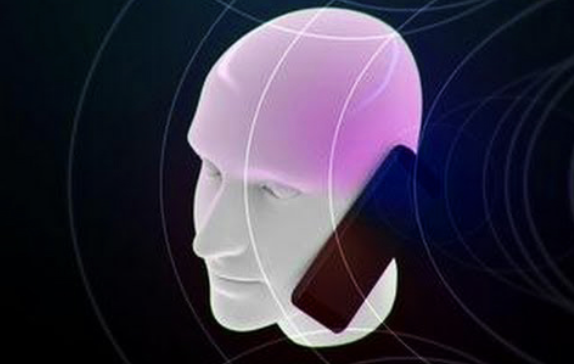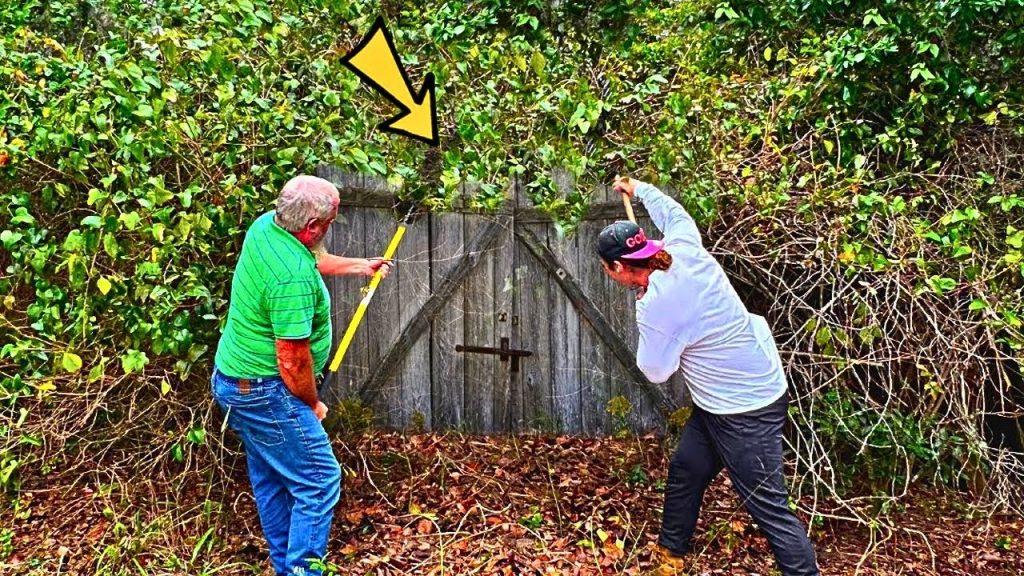This Is The Unexpectedly Strange Reason Why Your Own Voice Sounds So Weird When You Hear It!

image via – shutterstock.com
If you are anything like me, hearing your speaking voice on a recording, is usually cringe-worthy! Sometimes you may hear your recorded voice, and not even recognize it as your own. I’ve found it to be even weirder hearing my voice on a video…it almost seems disembodied.
I’ve always wondered about this strange phenomenon; it is true that your voice does sound different to yourself than you sound to others. The video you are about to watch explains that there is actually a scientific reason for this.
When we speak we are hearing our voice both externally and internally. Not only do you hear what is actually coming out of your mouth (external), but the “real” voice is combined with the sound of the internal bone vibration. This combination causes you to perceive your voice as softer and lower-pitched.
What happens when you hear a recording of your voice, is that the internal noises you usually hear when speaking, are eliminated. The sound vibration that comes out of a speaker reaches us through our ear drums, causing a sharper, stronger sound than the one we hear when we speak.
In recording a voice, there is some distortion, so that it is hard to ever totally know how you sound to others. All this being said, the following video you are about to watch below will give you a far greater understanding of WHY YOU HATE THE SOUND OF YOUR OWN VOICE!
Please SHARE This With Family and Friends
THIS Is The Strange Why Mosquitos Prefer To Bite Some Humans and Leave Others Alone!

image via – youtube.com
If you are a person whom mosquitos seem to find “attractive”, the video you are about to watch below, is for you. People, like my husband, who aren’t as delicious as I am to mosquitos, often ‘poo-poo’ my not wanting to sit outside at nighttime, when it takes 5 minutes for me to be “eaten alive!”
Well, I can’t wait until he watches this video…it offers a comprehensive explanation as to why some people are bitten so often, while others don’t. You may have heard the explanation that mosquito ‘victims’ have sweeter blood, but this is not the case.
Rather, it is the fact that people vary in the types of bacteria that exist on their skin, and some bacteria emit better smells than others, which determine whether the mosquitoes want a taste! In addition to differing bacteria, carbon dioxide given off in our breath, the heat of our bodies (RUNNERS BEWARE), and some other surprising factors make those who are bitten frequently, quite irresistible.
As there is more at stake than itchy bumps, the following footage which goes into greater detail about risks and protection, is a must-see. As mosquitoes carry many potentially life-threatening diseases, making good choices concerning repellants, is extremely important.
Mosquito bites aren’t just an annoyance; given the health risks, watching this video will ensure a safer and more comfortable summer ahead.
Please SHARE This With Family and Friends
Have You Ever Spotted THIS Small Hole Above Someone’s Ear? THIS Is The Strange Reason Why It’s There!

image via – facebook.com
If you have ever noticed that somebody has a tiny hole above their ear, that looks like it could be a misplaced dimple, you may have just thought that it was from some weird type of piercing. However, what you actually spotted is a body feature that is a naturally occurring mutation in some humans. And while the little hole is not all that common in The United States, it is more prevalent than you’d imagine it to be!
Those tiny holes are best known as preauricular sinuses and they are located right around the junction where the top of the external ear cartilage meets the face. They are considered a birth defect and get passed down from one generation to the next and so on..
The tiny holes can show up on 1 or both ears, with the right ear being the more common site. Usually they are harmless, but just like any other types of sinuses, they can sometimes become infected and require treatment and antibiotics. Some may also form cysts and in rare cases draining or removal is the best option.
Why the holes are there in the first place and for what purpose remains mostly quite the mystery. The video mentions an interesting theory put forth by Neil Shubin, an evolutionary biologist, who thinks that these holes could very well be an ‘evolutionary remnant of fish gills left over’. It’s an interesting theory and makes complete sense, but there could just as easily be another explanation for the strange holes!
The chances of a person being born with a preauricular sinus dimple varies across geographical and ethnic lines. Researchers in Korea found that the small dents are most common among Asian and African populations, where between 4-10% of the population may have them.
In comparison, less than 1% of Americans and people born in the U.K. are affected, which is way less. In Ethiopia, these small holes are considered lucky to have because they’re believed to bring people abundance, riches, money and wealth!
If you didn’t know what those strange ear holes were before, now you know the basics about the auricular sinus. Please pass this article on and help pass it along so that more people can learn about them and be informed!
Please SHARE This With Your Family and Friends
These Are The Top 5 Phones That Give Off The Highest Radiation. Is Yours On The List?

image via – youtube.com
Just about everyone owns, or at least uses, a cell phone these days. Even some kids who can’t speak yet have access to the the devices, they are simply everywhere. In the span of a few short years they have become widely available and increasingly affordable. While they make life all the more convenient, there remains a lot of questions and concerns about whether or not they are completely safe to use.
On of the main issues surrounding cell phone safety is whether or not they increase the risk of developing cancer or tumors in the neck and head areas. This concern is borne out of the fact that cell phone antennas emit radiofrequency energy waves, which are a form of non-ionizing radiation that our bodies can absorb.
Experts have been divided for years, and remain split to this day, as to whether or not the radiofrequency energy given off by cell phones leads to a higher risk of developing cancer. In addition, many other factors come into play, such as how much time an individual spends on their phone, where they hold and store it, the type of cell phone used, and so forth.
Regardless of what the answer may turn out to be, the Federal Communications Commission (FCC) has been exercising oversight over the levels of radiation that cell phones are allowed to emit. In terms of health and safety standards, FCC regulations state that all cell phones sold in the US must be tested for their SAR, or Specific Absorption Rate.
That value is the rate at which radiation from a cell phone is being absorbed into the human body when the phone is held up next to the ear. The maximum rate allowed is 1.6 watts per kilogram of body weight. A device whose SAR exceeds this amount is deemed unfit for human use and thus banned from being sold.
CNET, the leading online tech review website, has been keeping track of the SAR for every cell phone that they have ever reviewed. In the clip below CNET senior editor Donald Bell lays out the top five cell phones with the highest levels of radiation, or SAR scores, which can also be found right here:
1) Motorola Droid Maxx, SAR 1.54. Sold by Verizon Wireless 2) Motorola Droid Ultra, SAR 1.54. Sold by Verizon Wireless 3) Motorola Moto E, SAR 1.5 4) Alcatel One Touch Evolve, SAR 1.49. Sold by T-Mobile 5) Huawei Vitria, SAR 1.49. Sold by metroPCS
The worst cell phone on the list, the Motorola Droid Max, is also one of the priciest and best rated ones. Mr. Bell notes that CNET reviewers gave it 4.5 stars and praised it as an “outstanding phone” thanks in part to its 15 hour battery life. Numbers one and two are the more expensive models on the list, while the remaining three are comparatively cheaper android phones.
The next time you go to pick out a new cell phone, be sure to look up what the SAR is for any that you like. It’s always better to err on the side of caution and to make informed choices that are best, and healthiest, for ourselves.
Please Share This List With Your Family and Friends
He Pours Molten Aluminum Into THIS Fish Tank. What’s Revealed Inside Is So Awesome!

image via – youtube.com
SCIENCE MEETS ART in this really cool video you are about to watch. YouTube’s “The Backyard Scientist” demonstrates how adding polymer beads to water creates an environment that will allow molten aluminum to turn into magnificent pieces of sculpture.
When he pours 10,000 tiny polymer beads into an aquarium filled with water, the beads absorb the water, becoming nearly 200 times their weight! They provide an environment for the molten aluminum that he dangerously heats, to be transformed.
He amusingly interviews his dog, providing him with protective goggles which he reluctantly dons a pair for himself as well, and then procedes to throw the molten aluminum inside the tank of water.
You simply won’t believe your eyes as the aluminum becomes solid and he removes each unique piece from the large tank. Voila! Instant truly beautiful coral-like sculptures that I, myself, would like to own. Let us know what you think.
Have you ever seen anything like this before? Enjoy! 🙂
Please SHARE This With Your Family and Friends
The Strange Reason The Blinds Have To Stay Open When Your Plane Takes Off!

image via – shutterstock.com
Passenger safety is by far the number one priority all across the airline industry. While most of the safety-related precautions and procedures that passengers see and go through happen at the gate and in the terminal, many more less obvious measures are also in place.
For starters, airplanes have to meet some very strict design and construction guidelines in order to comply with federal regulations. These ensure that all sorts of standard safety measures are built right into planes.
When you’re traveling through the sky at hundreds of mile per hour, with a full tank of jet fuel and contending with all sorts of natural hazards, safety and construction are essential. In addition, passengers take on an active role in their own safety when aboard the aircraft.
Everyone knows the drill that happens right before take off. The flight attendants run down the locations of all exits and bathrooms, make sure everyone is buckled in and that all cell phones and electronics are powered off. While the inherent importance of all those things is clear, the reason why we have to have the window blinds open on take off and landing is less than clear.
Even so, we all open them if asked to and there is a good reason behind the safety measure. According to airplane crash statistics, the majority of problems and accidents that occur while flying happen during take off and landing. Having the window blinds raised ensures that there are more eyes looking out.
More eyes equal more chances for someone to see any potential issues or problems that may have arisen or that have not yet been spotted. From where passengers are seated they can see the wings, engines, and other parts of the plane body that the pilots up front cannot see or that the cabin crew missed because they’re busy working.
The idea is that a passenger who spots an issue, or what he thinks could be an issue, will report it and raise the alarm so that the crew can evaluate and respond. While we may never know how many crashes have been avoided because of this one simple safety precaution, it’s undoubtedly saved a number of lives.
It makes sense and it’s not a lot to ask for people to open the window shades at key times during the flight. Every design aspect and all of the inconspicuous, seemingly minor, details really do serve very important safety functions.
It’s because of this that the airline industry has the best record on file in regards to passenger safety and transportation. According to Discovery, the odds of a person dying in a plane crash are 1:11 million, whereas the odds of dying in a car accident are 1:5,000. In comparison, the odds of being killed by a shark are 1:3.7 million (National Geographic).
Those odds put it all in perspective; it’s extremely rare to find yourself in an aviation accident, let alone die in one, thanks in part to open shades.
Please Share This Story With Family and Friends




